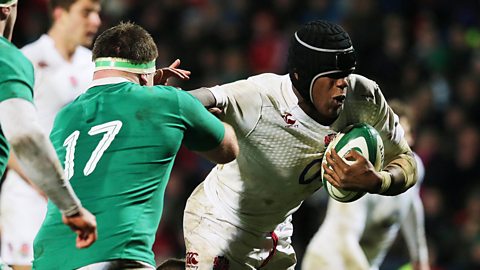Analysing individuals' performances in rugby
Most elite rugby union teams now use technology to monitor players' skills and fitness. For example, clubs such as Leicester Tigers, Harlequins, Ulster and Connacht use a piece of technology which fits into a small pocket on the underside of a player's jersey. This is linked to a heart rate monitor and both elements download information to a docking station which can be viewed during and after matches by the coaches and sports scientists. Coaches use the information to influence their in-game decisions and the data is used afterwards to shape players' training programmes.

An Ireland player in action with the personal monitor in a pocket on the back of his shirt
The technology monitors:
- high speed running â how many metres a player covers at a specific speed
- high metabolic load â how many metres a player covers when accelerationThe rate of change in speed (or velocity) is measured in metres per second squared. Acceleration = change of velocity Ă· time taken. and decelerationSlowing down or negative acceleration, eg the car slowed down with a deceleration of 2 msâ»ÂČ. at high intensity
- heart rate â how much effort a player is putting in
- accelerometer â how much impact players give and take during contact
- dynamic stress load â how much contact a player's feet make with the ground
- step balance â how much a player favours one foot over another
Analysing this data helps to:
- prevent injury â by identifying weaknesses or poor technique early
- improve skills
- improve fitness
- deploy the right players at the right time
- win matches
Watch the technology in action: